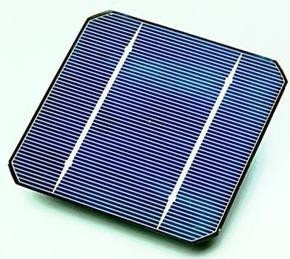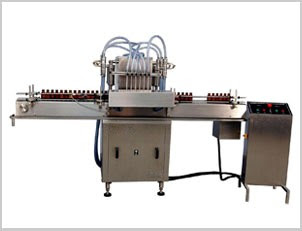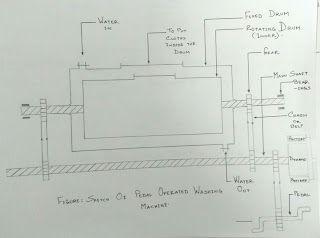HEAT EXCHANGER
Have you ever
watched wisps of smoke drifting from smokestacks and wondered how much energy they're uselessly pumping into the air?
Maybe less than you might think! Saving energy is a huge and costly problem for
factory bosses and it's one reason they often install devices called heat
exchangers to salvage as much heat as possible from waste
gases. Heat exchangers have lots of other familiar uses too. Engines in cars, ships and
planes use heat exchangers to work more efficiently, and if you
have a refrigerator or an air-conditioner in your home, those are using heat
exchangers too. So what exactly are heat exchangers and how do they work?
HEAT EXCHANGER
Definition
Suppose you have a gas central
heating furnace (boiler) that heats hot-water radiators in various
rooms in your home. It works by burning natural gas, making a line or grid of
hot gas jets that fire upward over water flowing
through a network of pipes. As the water pumps through the pipes, it absorbs the heat
energy and heats up. This arrangement is what we mean by a heat exchanger: the
gas jets cool down and the water heats up.
Figure Heat Exchanger
A heat
exchanger is a device that
allows heats from a fluid (a liquid or a gas) to pass to a second fluid
(another liquid or gas) without the two fluids having to mix together or come into
direct contact. If that's not completely clear, consider this. In
theory, we could get the heat from the gas jets just by throwing cold water
onto them, but then the flames would go out! The essential principle of a heat
exchanger is that it transfers the heat without transferring the fluid that
carries the heat.
What fluids can a Heat Exchanger operate with?
The suitability of a fluid with a heat exchanger will
depend on the type of heat exchanger being used and the materials which are
available. Standard Thermex Heat Exchangers are suitable for most fluids
including Oil, Water, Water Glycol and Sea Water. For more corrosive fluids
such as chlorinated salt water, refrigerants and acids other materials such as
Stainless Steel and Titanium will need to be used instead
Classification of Heat Exchangers
1. According to flow arrangement of fluids.
- Parallel flow heat exchanger
- Counter heat exchanger
- Cross flow heat exchanger
- Direct contact type or mixers
- Recuperators or transfer type heat exchangers
- Regerators or storage type heat exchangers
- Tubular heat exchangers
- Shell and tube type heat exchangers
- Finned tube type heat exchangers
- Compact heat exchangers
What is a heat exchanger "pass" and how do I know how many passes I need?
A Heat Exchanger Pass
refers to the movement of a fluid from one end of the heat exchanger to the
other. For example, when referring to the "through tubes" circuit
(usually the coolant); · Single Pass – Fluid enters one end of the heat
exchanger, and exits at the other end. · Double Pass – Fluid enters and exists
the heat exchanger at the same end. · Triple Pass – Fluid travels the length of
the heat exchanger body three times before exiting. The images below will help
to demonstrate this;
Single Pass (1 pass)
Double
Pass (2 pass)
Triple
Pass (3 pass)
·
A greater number of
passes increases the amount of heat transfer available, but can also lead to
high pressure loss and high velocity.
·
With a full set of
operational data, Thermex can select the most efficient heat exchanger possible
whilst working within the pressure loss and velocity limits.
· The number of passes
on the primary circuit can also be adjusted to optimise thermal performance and
efficiency by changing the baffle quantity and pitch.
Design Aspects of Heat Exchanger and its Selection
From the simplest to
the most complex chemical process systems, heat exchangers are needed to carry
out the basic but fundamental function of efficiently transferring heat from
one medium to another. But how do you figure out which heat exchanger is
the right one for you? They are vast in their utilization and are a major
component in a seemingly infinite number of systems – from refrigerators to car
engines and of course, in our case, chemical plants. Regardless of
whichever industrial sector you find yourself in, you are essentially looking
for the same end product – that is, a heat exchanger that will efficiently get
the job done for you. So the question remains, what standards should you
be looking for? This answer will be different on a case by case basis, so
we've put together a list of the top principles you'll want to consider that
will help you create your short list. The criteria used when selecting a
type of heat exchanger include the following:
- Application –
How does your heat exchanger need to perform to help carry out your
process objectives (e.g. condensing, boiling)?
- Operating Specifications –
What pressures and temperature ranges will be used during different phases
of the process?
- Material of Construction –
Do the sudden temperature changes encountered during the process put the
unit at risk of suffering thermal stress?
- Characteristics of Thermal
Fluid – Is a corrosion
resistant material of construction needed due to your heating/cooling
medium’s predisposition to fouling?
- Accessibility to Utilities –
Will the heat exchanger require a connection to cooling water, steam, hot
oil, etc.?
- Space Constraints –
Does the system layout and floorplan prohibit the use of certain models of
heat exchangers due to limited headroom?
- Housekeeping –
Is the heat exchanger design conducive to carrying out the cleaning and
maintenance procedures that will need to be performed on a routine basis?
- Scalability –
Will the unit be able to carry out the heat transfer needs of the existing
system and any future process developments?
- Cost –
How much are you willing to spend on a unit based on the range of options
available to you? (You must consider purchase cost, installation cost,
operating cost, and maintenance cost.)
- Environment –
Is the unit energy efficient and what type of carbon footprint does it
leave?
By asking yourself the
questions listed above, you can take your answers and use them to determine the
ideal heat exchanger design based on your operation specifications and other
factors identified in your personal criteria. Whether you have a new
process or need to replace a heat exchanger that is part of an existing system,
it’s important to assess (or reassess) what heat exchanger model is best for
your given process. Operating changes due to process developments and
heat transfer technology advancements may make a different type of heat
exchanger better suited for your process optimization.
How to make a heat exchanger more efficient
Heat exchanger efficiency can be defined
in many ways, in terms of thermal performance there are several key factors to
consider;
Temperature differential - The difference between the hot fluid
and coolant is very important when designing a heat exchanger. The coolant
always needs to be at a lower temperature than the hot fluid. Lower coolant
temperatures will take more heat out of the hot fluid than warmer coolant
temperatures. If you had a glass of drinking water at room temperature for
example, it is much more effective to cool it down using ice rather than just
cool water, the same principle applies to heat exchangers.
Flow rate - Another important factor is the flows of
the fluids in both the primary and the secondary side of the heat exchanger. A
greater flow rate will increase the capability of the exchanger to transfer the
heat, but a greater flow rate also means greater mass, which can make it more
difficult for the energy to be removed as well as increasing velocity and
pressure loss.
Installation - The heat exchanger should always be
installed based on a manufacturers' guidelines. Generally speaking the most
efficient way to install a heat exchanger is with the fluids flowing in a
counter-current arrangement (so if the coolant is travelling left to right, the
hot fluid travels right to left) and for shell and tube heat exchangers the
coolant should enter at the lowest inlet position to ensure that the heat
exchanger is always full of water. For air cooled heat exchangers it is
important to consider the air flow when installing a cooler, any part of the
core which is blocked will compromise cooling capacity.
What causes a heat exchanger to fail in operation?
There are many
possible causes for heat exchanger failure, some examples for shell and tube
include
Symptom I
Oil & Water mixing
Possible Cause
O Ring Failure
Split Tube
Possible Solution
Normally a seal kit is all that is required to solve the problem, but temperatures should be checked to make sure that the seals purchased are suitable.
Prevention
Before purchasing an Oil Cooler, make sure that Thermex are aware of the pressures and temperatures being used.
Symptom II
Erosion on the tube plate face
Possible Cause
Water velocity is too high
Possible Solution
Check water flow rate and advise Thermex. In some cases a higher grade of material such as 70/30 CuNi or Titanium may be required.
Prevention
When using sea water, make sure that the flow rate doesn't exceed the Heat Exchanger's capabilities. Contact us for advice.
How to increase the lifetime of a Heat Exchanger
Heat exchangers are manufactured from robust materials, have no moving parts and operate at a variety of different pressures and temperatures, therefore if a heat exchanger is used in the correct way then there is no reason why it shouldn't be able to remain operational for many years. To help increase the operational lifetime of a heat exchanger there are several steps that should be taken;
Make sure the design data is accurate - If you are sending data to our engineers for heat exchanger selection, then it is best to make sure that it is as accurate as possible. Not only will this ensure that your heat exchanger is thermally efficient but also that it will be able to operate for a long period of time. If the flow rates are too high then erosion could be a problem, if the pressures are too high then leaks could occur and if there are any unusual chemicals in the fluids (such as acids in coolant water) then please contact us to check the compatibility. If our standard materials aren't suitable then we can usually supply an alternative which is.
Commission and Installation - When installing your heat exchanger, make sure that correct fittings and pipe work are used. If unsure, please check the Thermex Installation and Operation Manual for details. For heat exchangers on applications which use polluted, shallow or brackish sea water as the coolant and have copper alloy tubes, it is recommended to run the heat exchanger in clean sea water for several weeks first, this creates a protective layer over the tube material which helps to protect against corrosion. Where possible, filters should also be used where fluids may contain solid particles to prevent tube erosion from occurring.
Regular Maintenance and Servicing - All Thermex shell and tube heat exchangers are designed to allow for easy maintenance and servicing. The end caps can be removed allowing the internal tube bundle to be removed for cleaning. New seal kits can also be provided from stock and are available to purchase on our Web Shop. For information and tips on servicing your heat exchanger, please see the Thermex Installation and Operation Manual.
For more Information
Email dibakarkarmokar@gmail.com







Comments
Post a Comment